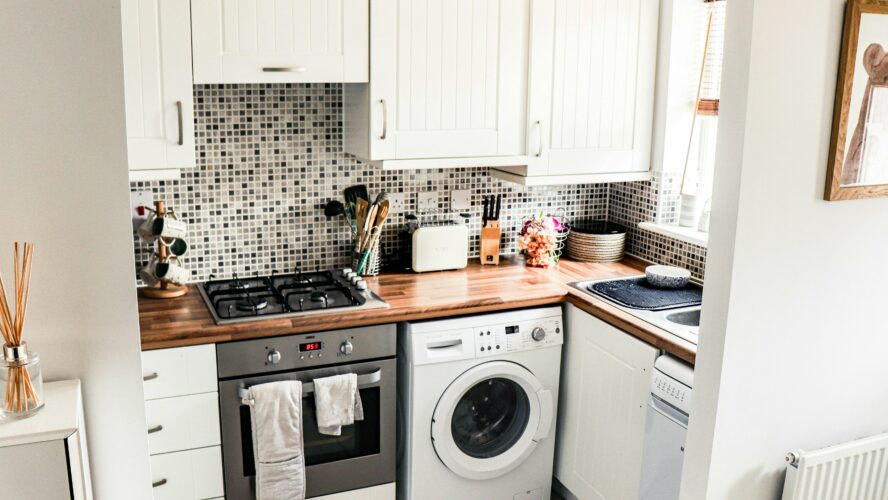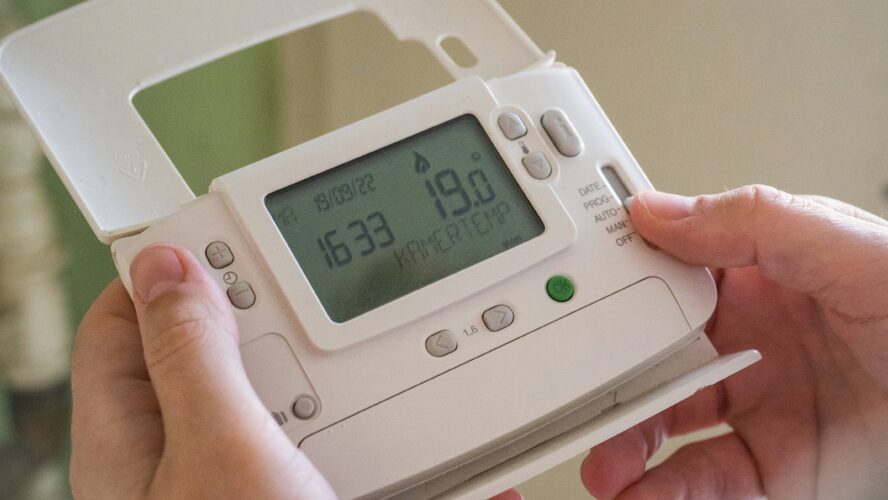
With rising energy costs and a competitive market, switching energy suppliers could help reduce your bills. In this blog, we’ll walk you through the process of how to switch energy suppliers and how the process of switching works, while answering your energy switching questions.
Why should I consider switching energy supplier?
Now more than ever, we know that people are struggling with price rise and energy bills.
Did you know?*



Now more than ever, we know that people are struggling with energy price rises. By switching energy suppliers, you could reduce your bills and ease the pressure on your household budget. The process is straightforward, and the savings could make a real difference.
How to switch energy supplier
1. Find a deal that’s right for you
You might decide to switch using a price comparison website, or through your own research about what deals are out there. Money Saving Expert’s guide includes advice about deals that aren’t always on comparison websites, so it’s worth keeping this in mind when shopping around for the best deal.
Each energy supplier will have different tariffs, typically including prepayment (or pay as you go) and monthly tariffs. Some tariffs offer cheaper energy at off-peak times, or ‘fixed rate’ tariffs that mean your costs stay the same even if energy prices increase (or decrease). It’s worth looking into the different tariffs each energy supplier can offer to find one that is best for you
If you’re not sure if you’re able to switch due to your circumstances, find our Q&A section below.
2. Make the switch
When you’ve decided on a deal, you can make the switch through a comparison website or the supplier’s website. You don’t have to tell your current supplier that you’re switching, as your new supplier will sort all the details out for you. If you’re wanting to switch on a particular date, mention this to your new supplier.
3. Take a meter reading
When you switch over, take your gas and electric meter readings and give these to your new supplier. Your new supplier will let you know when to do this, but it’s typically the day they’ve agreed to take over, so they can start billing from that reading onwards. It will also help your old supplier work out a final bill to send you.
Once you’ve settled your final bill with your old supplier, which could take a few weeks to come through, check with your old supplier and your bank that your direct debit (if you have one set up) is cancelled so that you don’t get charged.
Answering your questions about switching energy suppliers
It’s up to you to decide if, or when, to change energy suppliers, although if you’ve been on the same tariff with the same company for a year or more it might be worth shopping around to see if you’re getting the best deal. You could get different quotes from comparison websites and compare the best deals. Some people might decide to switch during the summer months when their account is more likely to be in credit, meaning that they won’t have any outstanding debt on their account when switching.
Sometimes, energy providers give incentives for switching, such as a ‘refer a friend’ credit bonus. If a friend is with an energy supplier that offers this, then you both could benefit with credit on your accounts. It usually works by getting a refer a friend code, so this could be an option if you want credit on your account, ready for the winter months.
It’s always worth remembering to look at any exit fees from your current supplier first, as you may want to factor this cost in when looking to switch.
If your new energy provider is part of the Energy Switch Guarantee, you should be able to switch over within five working days. You’ll also have a cooling-off period, which you can read about more below.
You’ll usually have a 14-day cooling-off period once you’ve agreed to a contract. This means that you’ll be able to change your mind if you decide you want to keep your current energy provider. To do this, you’ll need to contact the new provider to cancel.
If you’ve already been switched over to your new supplier but are still in the 14-day cooling-off window, they should give you the option to switch back to your original provider. You’ll be charged for any energy that’s been supplied to you that you’ve used.
If you top up your gas and electricity as you go, it might feel like you don’t have many options. If you’re on a prepayment meter and want to save money, you could ask your energy company about other options such as smart meters to monitor your usage better.
Don’t worry, you won’t lose it! Your old supplier will use your final meter reading to create your last bill. Any credit you’ve built up will be used towards the final bill, with you then paying whatever is left to pay.
If you’re still in credit after paying your final bill, they should refund the leftover amount to your bank account.
If you’re owed money and haven’t received your refund, simply contact your old supplier to make sure it’s returned to you.
If you have a debt with your current energy supplier, switching might still be possible, depending on how long you’ve owed the money.
Owing money for less than 28 days? You can generally still switch. Your old supplier will simply add what you owe to your final bill.
Owing money for more than 28 days? You’ll need to pay off this older debt before you can switch to a new supplier.
If you’re on a prepayment meter and owe £500 or less, you’ll need to ask your new supplier to agree to transfer your debt along with your supply. It also depends when they sent you the bill you haven’t paid. You can check Citizens Advice for more information.
There are limited times when a supplier can refuse to switch, but it could still happen, such as if you’ve been in debt with them for more than 28 days. If you’ve experienced problems switching energy suppliers, such as delays, you could be due compensation. Read Ofgem’s guide for more details.
Yes, you can switch energy suppliers with a smart meter. It can also simplify the switching process for you, as you won’t have to take any manual meter readings.
We still recommend that you do take a manual meter reading if you can access the meter, as it’s a good backup in case the meter readings are going through to the supplier incorrectly for different reasons (such as a faulty smart meter).
If you’ve received your final bill from your old supplier and think it might be inaccurate, first speak to your new supplier. They are responsible for ensuring the final meter reading you provided at the time of your switch is correctly passed on to your old supplier. If there’s a discrepancy, they may be able to help get this corrected.
If your old supplier disputes the reading you believe is accurate, it could be because it differs significantly from their estimates, or there’s a query about when it was taken. In these cases, having evidence like a photo of your meter with a date/time stamp can be helpful to show to your energy supplier.
If you pay your energy supplier directly for your energy, you can switch to a different provider or tariff. This includes those with a prepayment meter.
Always check your tenancy agreement first. Some agreements might require you to return the account back to the original supplier at the end of your tenancy. If you’re moving to a tariff that requires a smart meter, make sure you also check this is okay with the landlord.
If your landlord pays for the energy, you won’t be able to switch energy supplier. Instead, you’ll have to talk to them if you’ve found a better deal, but they may not agree to switching. If you think you’re being overcharged, check Citizens Advice’s guide about what your landlord can charge you for energy.
If you’re paying for the energy yourself and your tenancy agreement says you’re not allowed to switch, you can challenge this decision, as Ofgem states that you can switch energy suppliers anytime if you pay for the energy yourself. If you need more advice, speak to Citizens Advice or read theirguide about switching energy supplier or tariff if you’re renting.
Yes, you can switch your gas and electricity supplier if you have a source of renewable energy in your home or solar panels, as long as you’re switching to an eligible supplier.
Struggling with energy bills or debt?
Even with the best deals, managing energy costs can be a real challenge for many households. If you’ve switched energy suppliers or changed your tariff but are still finding yourself overwhelmed by bills or dealing with existing debt, please know you’re not alone.








